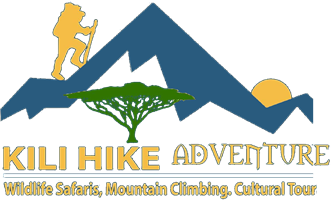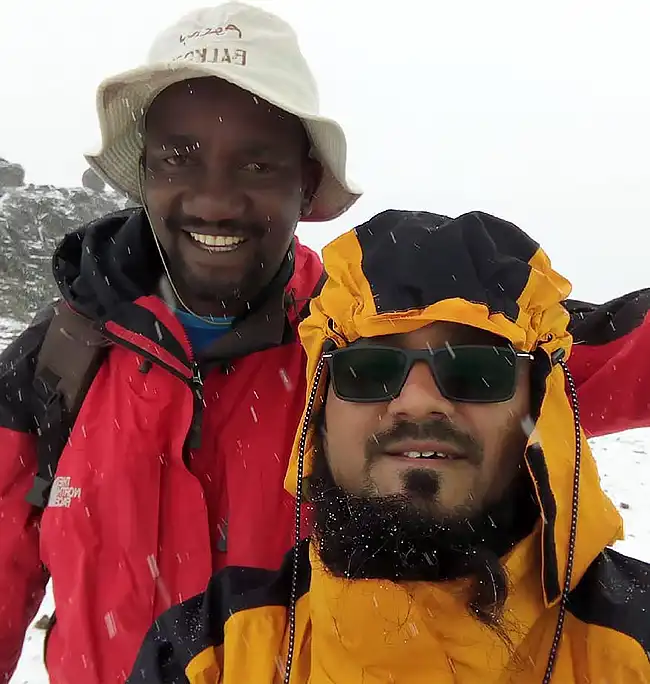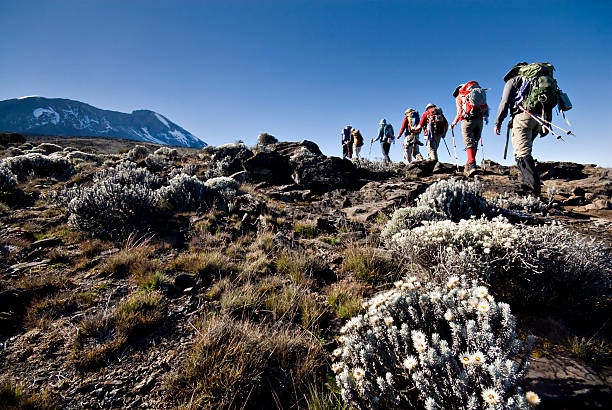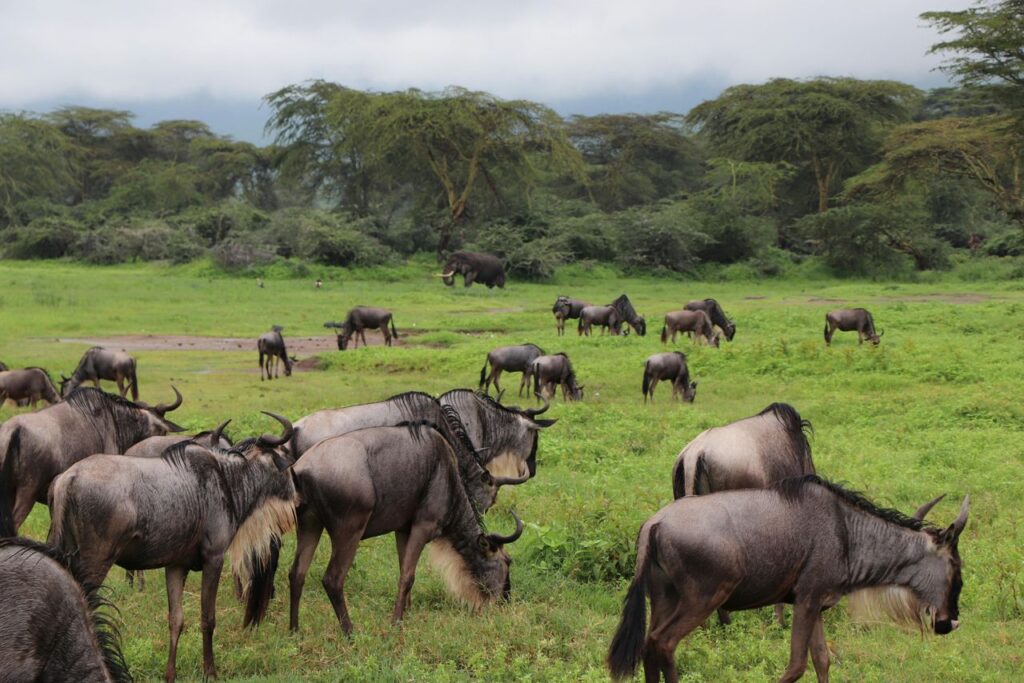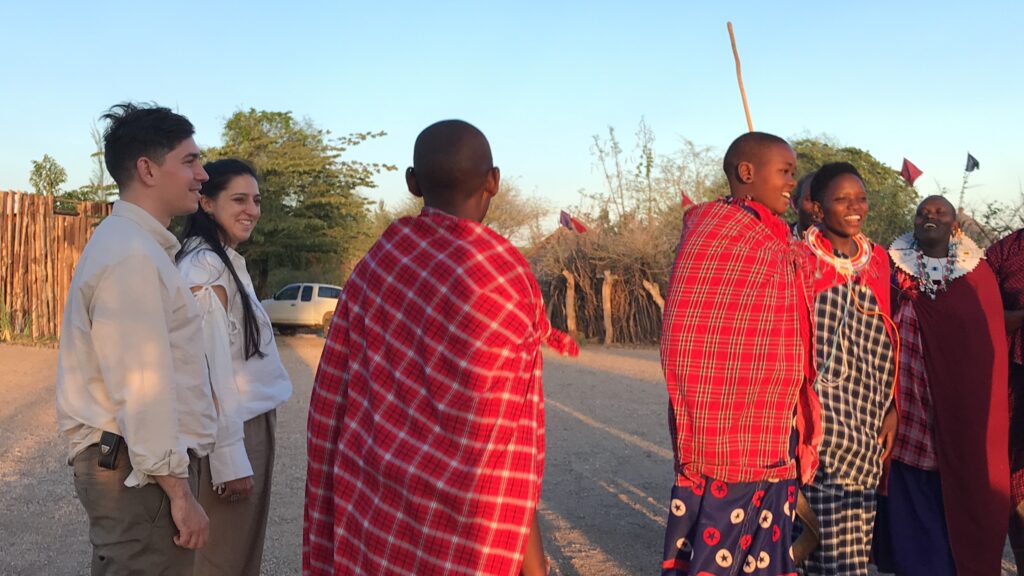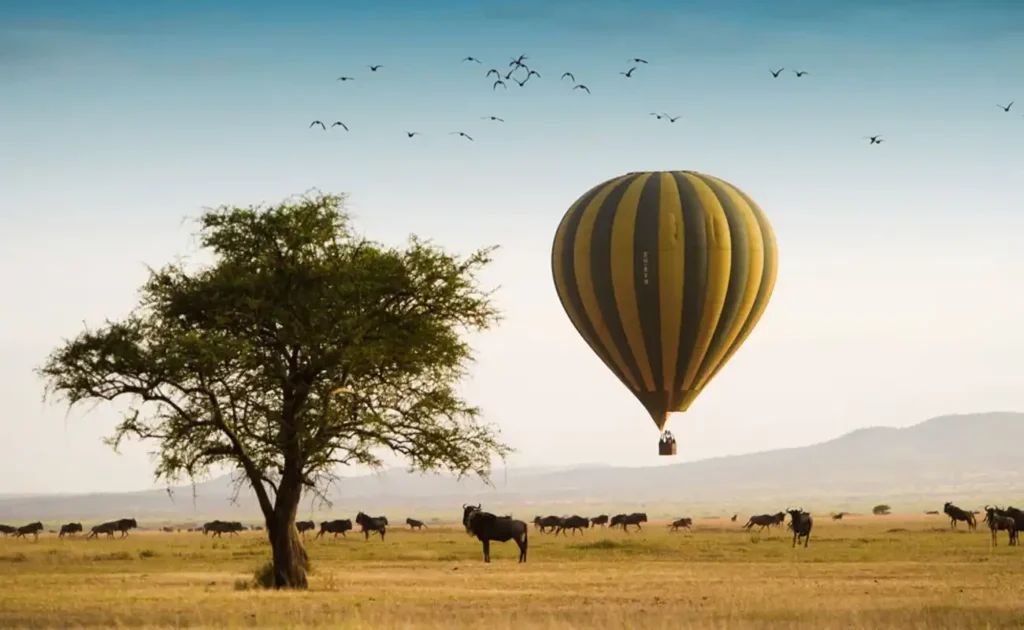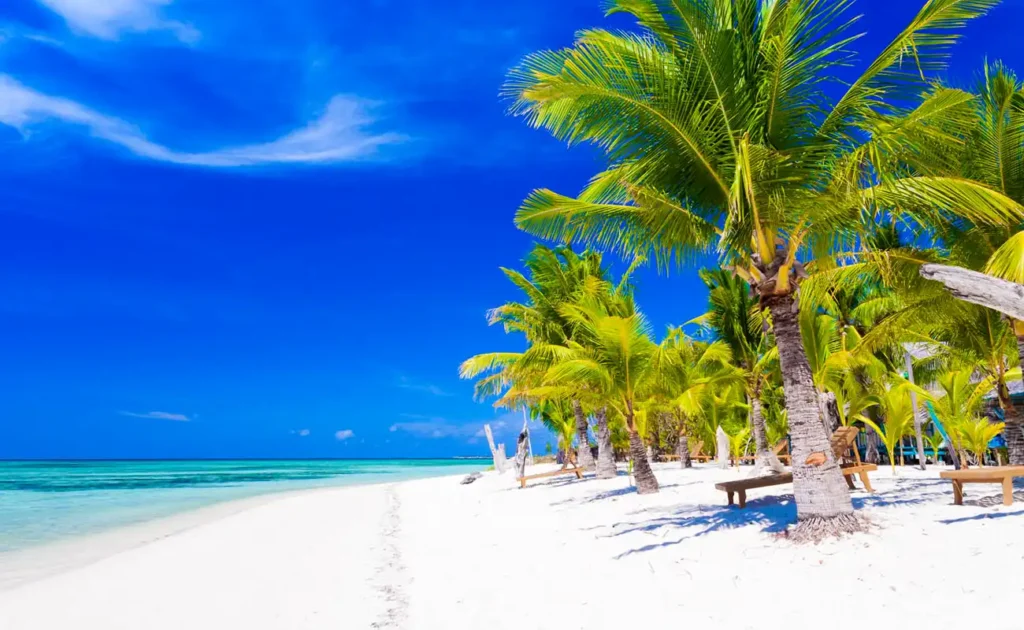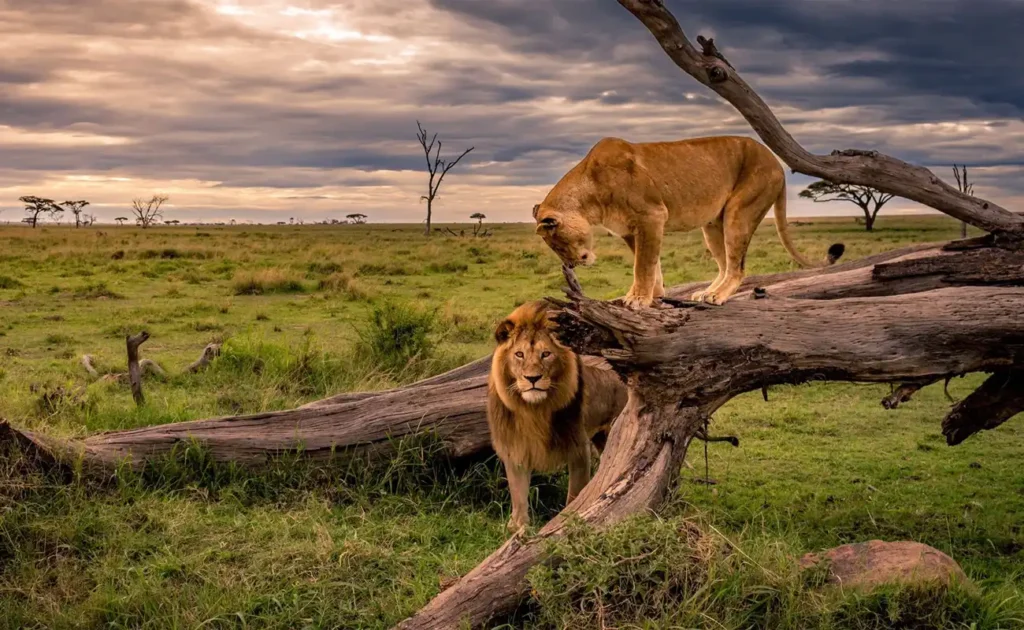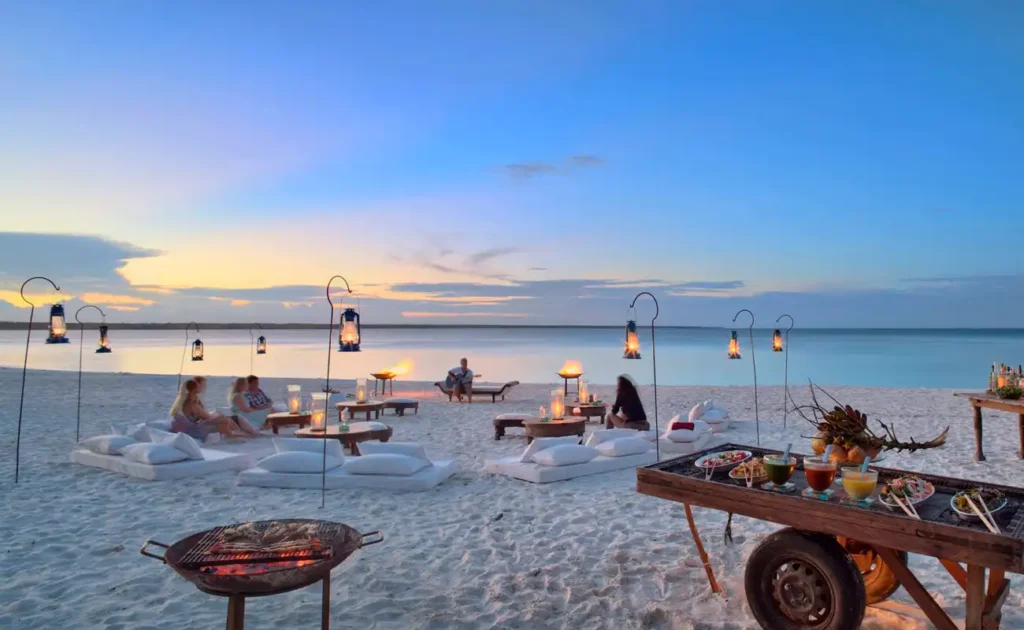Mount Kilimanjaro is one of the world’s most recognizable mountains, and for good reason. Standing tall at 5,895 meters (19,341 feet), it is the highest free-standing mountain on Earth and the tallest peak in Africa. A trek to the summit offers a once-in-a-lifetime adventure through diverse ecosystems, ranging from lush rainforests to frozen glaciers. Whether you are planning your climb or simply curious about this iconic peak, this comprehensive guide will answer all your questions and provide insight into what it takes to conquer Mount Kilimanjaro.
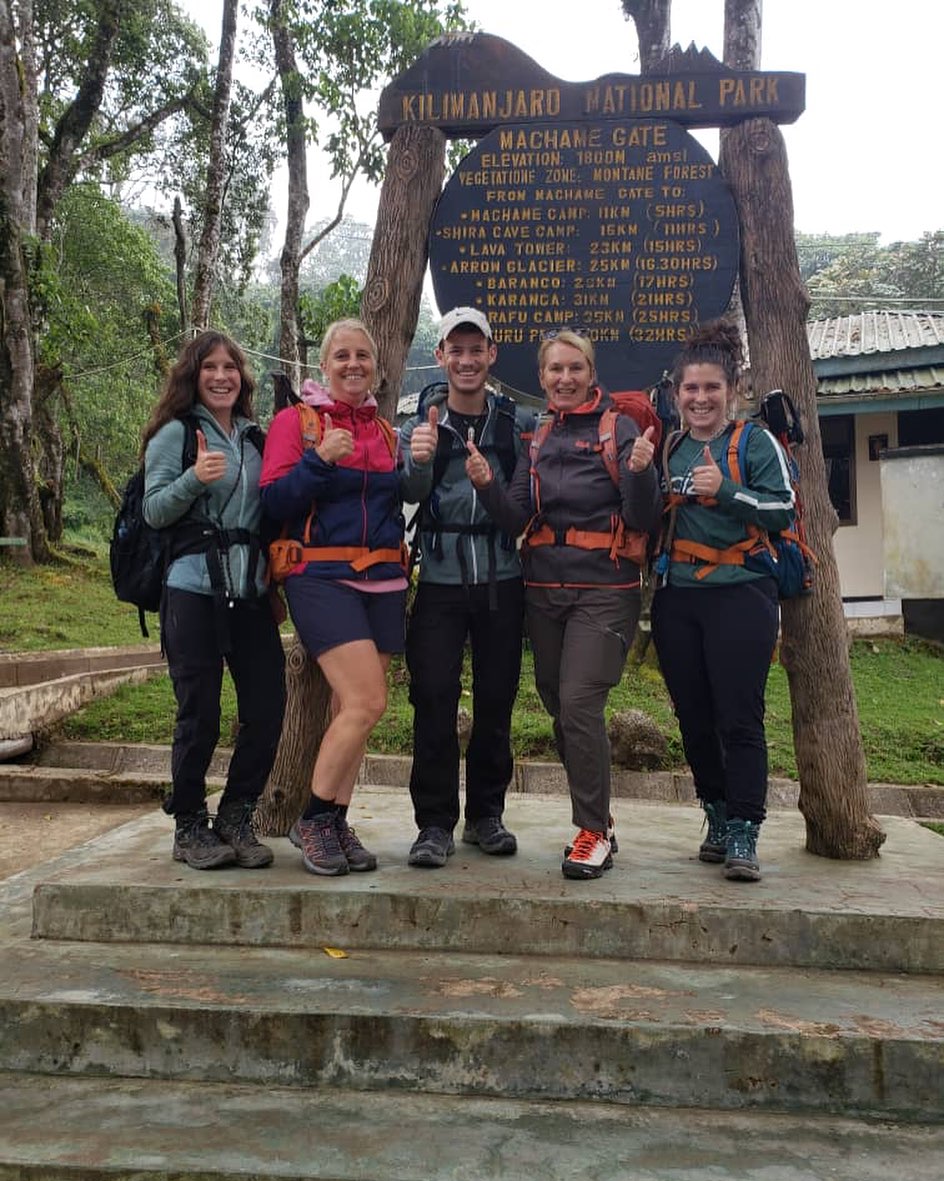
hakuna matata pride of Kilimanjaro.
Where Is Mount Kilimanjaro?
Mount Kilimanjaro is located in Tanzania, East Africa. It lies near the Kenyan border, with its base sitting within Kilimanjaro National Park. The mountain’s towering presence dominates the landscape and provides a stunning backdrop for Tanzania’s northern safari circuit, which includes popular parks like the Serengeti, Tarangire, and Ngorongoro Crater. This makes Kilimanjaro a prime location for adventurers looking to combine both trekking and safaris during their visit.
How High Is Mount Kilimanjaro?
Mount Kilimanjaro’s height is an impressive 5,895 meters (19,341 feet) above sea level, making it the tallest peak in Africa and one of the famous Seven Summits (the highest mountain on each continent). It is a non-technical climb, which means that no special mountaineering skills are required, but the altitude presents a significant challenge. The summit, known as Uhuru Peak, is the highest point and the ultimate goal for trekkers aiming to stand on top of Africa.
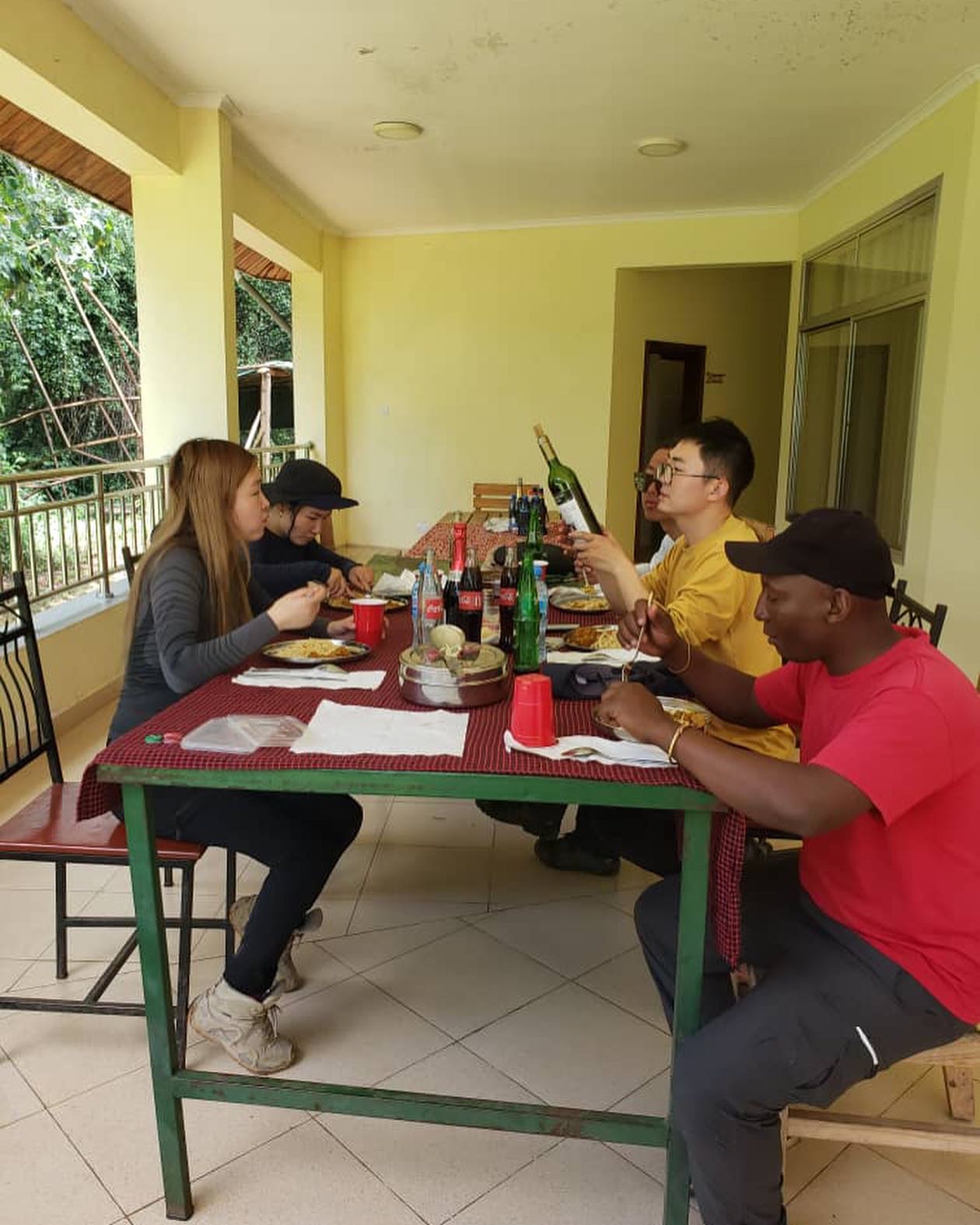
picnic lunch after successful hike at Kilimanjaro
How Hard Is It to Climb Mount Kilimanjaro?
When considering how hard it is to climb Mount Kilimanjaro, the answer largely depends on the trekker’s physical fitness, acclimatization to high altitudes, and the route chosen. Despite not requiring technical climbing skills, Kilimanjaro is not an easy trek. Climbers face:
- Altitude:As you ascend, the oxygen levels decrease, leading to the risk of altitude sickness.
- Endurance:Trekkers walk long distances each day, often uphill, for multiple consecutive days.
- Weather:Kilimanjaro’s weather varies greatly, from hot, humid conditions at the base to freezing temperatures at the summit.
While Kilimanjaro is a challenging trek, with proper preparation, training, and choosing the right route, most fit and determined climbers can reach the summit.
How Long Does It Take to Climb Mount Kilimanjaro?
Climbing Mount Kilimanjaro can take anywhere from 5 to 9 days, depending on the route you choose and your rate of acclimatization. The longer the route, the more time you will have to adjust to the altitude, which can significantly increase your chances of reaching the summit. The most popular routes, such as Machame and Lemosho, typically take 6-8 days to complete, allowing for a slower ascent and better acclimatization.
Shorter routes like Marangu can be completed in as little as 5 days, but they are more physically demanding due to the rapid altitude gain, which increases the risk of altitude sickness.
Kilimanjaro Routes: Choosing the Best Route to Climb Kilimanjaro
There are several trekking routes to the summit of Mount Kilimanjaro, each with its own unique challenges and scenic highlights. Choosing the right route is key to a successful climb. Here are some of the most popular options:
- Marangu Route: Also called the “Coca-Cola Route,” this is the only path with hut accommodations. It is considered the easiest and shortest route but has a lower success rate due to rapid ascent.
- Machame Route: Known as the “Whiskey Route,” it is more challenging than Marangu but offers better acclimatization and stunning views. Most climbers take 6-7 days on this route.
- Lemosho Route:A longer route that takes 7-9 days, this path provides some of the best acclimatization and fewer crowds, making it one of the preferred choices for first-time trekkers.
- Rongai Route:Approaching Kilimanjaro from the north, this route is less crowded and has a moderate difficulty level, typically taking 6-7 days.
The longer and more scenic routes, like Lemosho and Machame, generally have higher summit success rates due to the slower ascent, which allows for better acclimatization.
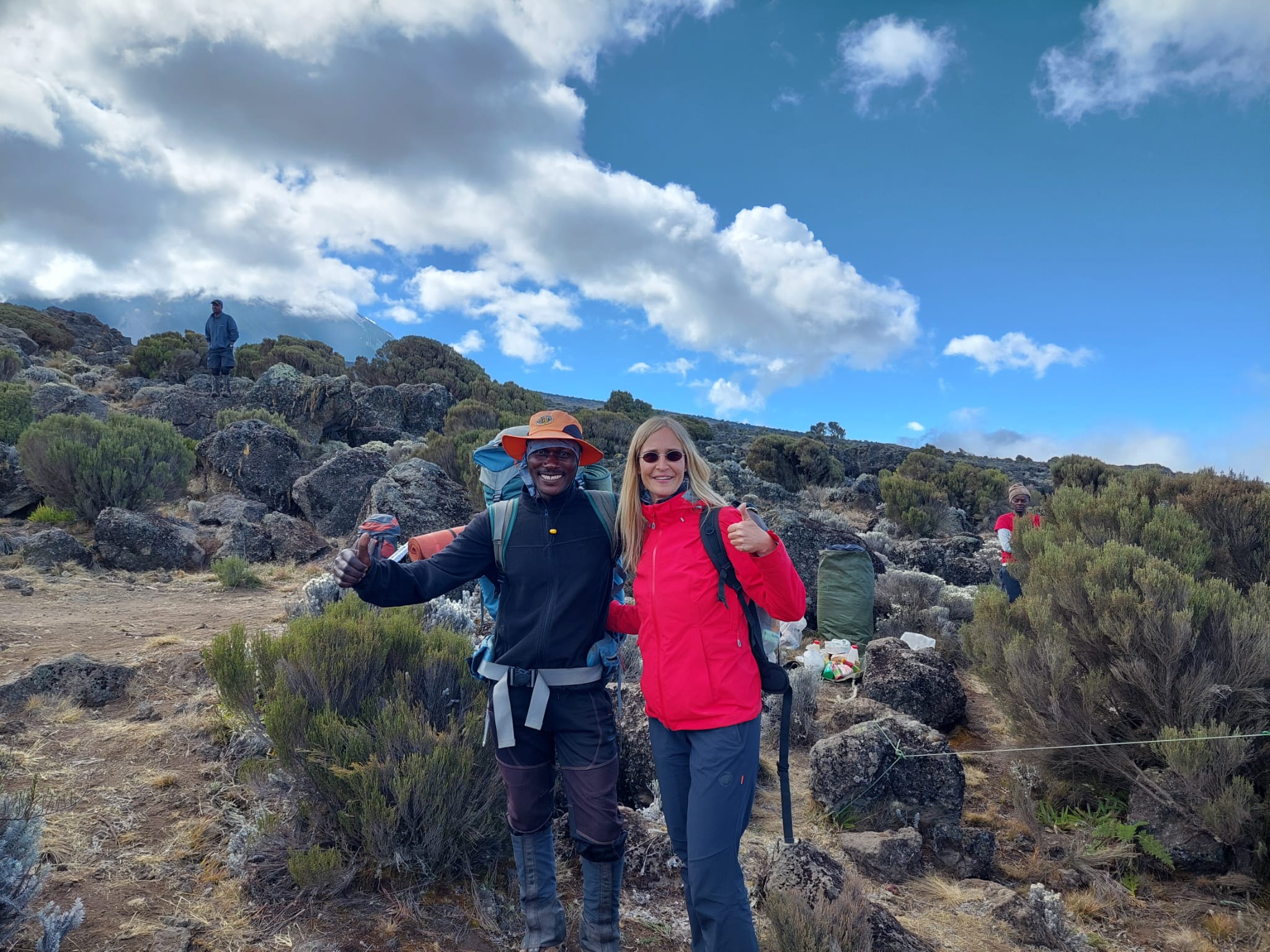
Kilimanjaro Adventure
When to Climb Kilimanjaro: Best Time to Climb Mount Kilimanjaro
The best time to climb Kilimanjaro is during Tanzania’s dry seasons, which fall between January and March, as well as June to October. These months offer the most stable weather conditions, making trekking more manageable and enjoyable. During the wet seasons (April to May and November), the trails become muddy and slippery, increasing the difficulty of the climb.
However, the dry season also sees more trekkers on the mountain, so for those looking for a quieter experience, the shoulder months (early December or late February) are great alternatives.
Kilimanjaro Climb Cost: How Much Does It Cost to Climb Kilimanjaro?
The cost of climbing Kilimanjaro varies depending on several factors such as the route chosen, the number of days, and the trekking company. On average, a fully organized climb costs between $2,000 and $5,000. This includes park fees, guide and porter services, meals, and camping gear. It’s important to choose a reputable trekking company that prioritizes safety, as cheaper options may cut corners on equipment, guide experience, or acclimatization strategies.
Additional expenses can include flights to Tanzania, visa fees, travel insurance, and tips for guides and porters.
Hiking Mount Kilimanjaro: What to Expect
When hiking Mount Kilimanjaro, you’ll experience a variety of landscapes and climates, making the trek both challenging and rewarding. The hike starts in tropical rainforests at the base, transitions through moorlands, and eventually leads to alpine desert and glaciers near the summit. This diversity makes Kilimanjaro one of the most unique hikes in the world.
The trek itself involves long days of walking, with some days being relatively easy and others, such as the summit push, being physically demanding. Most routes require trekkers to walk for 5-7 hours a day, with the summit day being the longest, typically involving a midnight start and a grueling 12-15-hour trek to Uhuru Peak and back to camp.
Is Mount Kilimanjaro Active?
Despite being a volcanic mountain, Mount Kilimanjaro is not active. Kilimanjaro is made up of three volcanic cones: Kibo, Mawenzi, and Shira. Kibo, the highest peak, is dormant but not extinct, meaning it could erupt again in the future. However, there have been no significant eruptions for thousands of years, and the mountain is considered safe for climbers.
Kilimanjaro Summit: Reaching Uhuru Peak
The ultimate goal of climbing Kilimanjaro is reaching Uhuru Peak, the highest point on the mountain and in Africa. The view from the summit is spectacular, offering a panoramic vista of Tanzania and, on a clear day, even glimpses of Kenya’s plains. Reaching the summit is a physically and mentally demanding achievement, particularly due to the high altitude and freezing temperatures.
Most climbers reach Uhuru Peak after a grueling final push from their last camp, often starting at midnight to reach the summit by sunrise.

summit Africa
Mount Kilimanjaro Location: A Trekker’s Dream Destination
As mentioned earlier, Mount Kilimanjaro is located in Tanzania, one of Africa’s top travel destinations. This region offers more than just the mountain; it’s also a gateway to some of the continent’s most famous wildlife reserves, making it a perfect spot for adventure tourism.
Many climbers choose to combine their Kilimanjaro trek with a Kilimanjaro safari to nearby parks like Serengeti, Ngorongoro Crater, and Tarangire, providing a full Tanzanian wildlife and hiking experience.
Kilimanjaro Safari: Exploring Tanzania’s Wildlife
While Kilimanjaro itself is a massive draw for hikers, many visitors choose to pair their trek with a Kilimanjaro safari, which offers the chance to see Tanzania’s incredible wildlife. After completing the trek, many adventurers head to places like the Serengeti National Park, famous for the annual wildebeest migration, or Ngorongoro Crater, a UNESCO World Heritage Site home to diverse wildlife, including the Big Five.
Tanzania’s proximity to Kilimanjaro Mountain makes it easy to combine trekking and safari, creating an unforgettable African adventure.
Kilimanjaro Climb Map and Routes
It’s essential to familiarize yourself with a Kilimanjaro climb map to understand the various routes, camps, and distances covered each day. Maps provide insight into elevation gains, overnight stops, and how each route ascends to the summit.
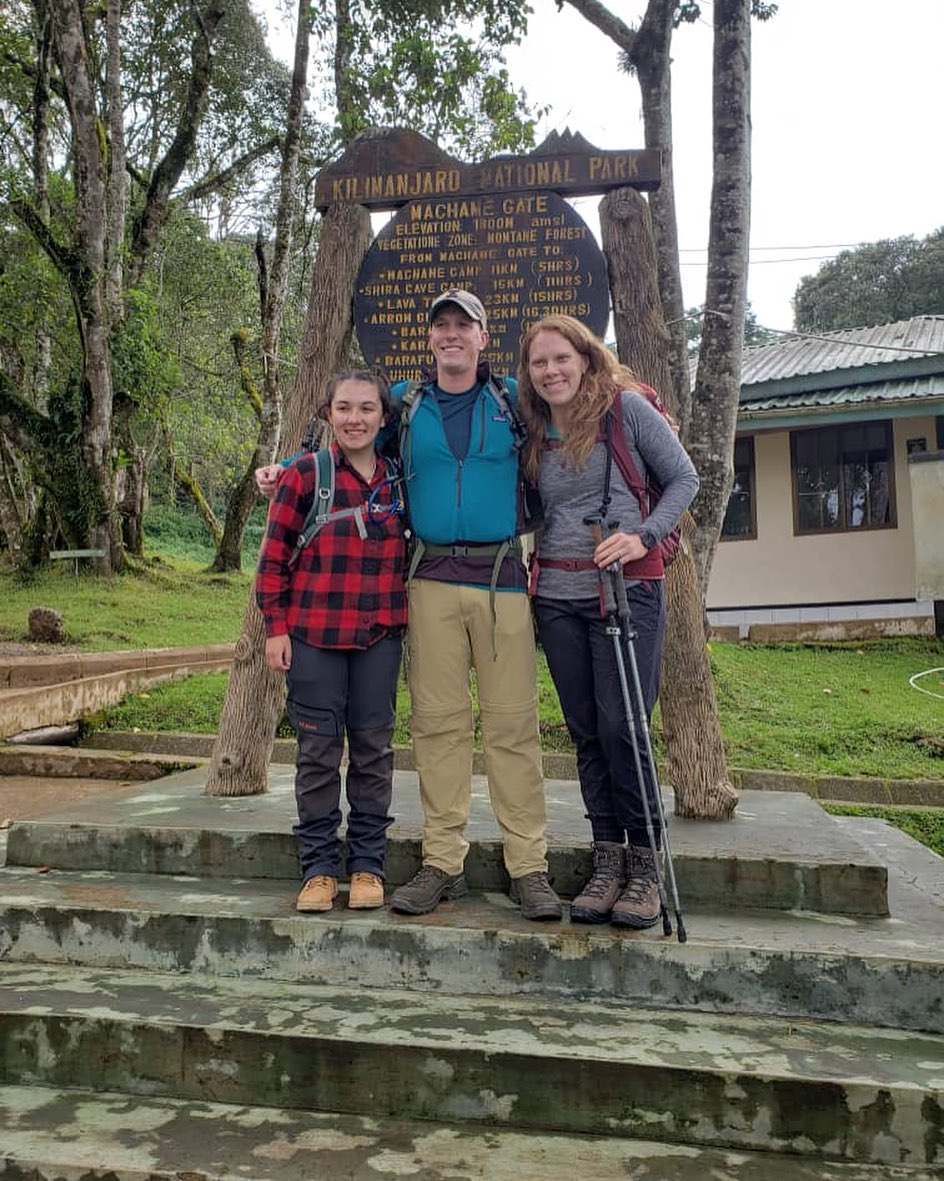
a photo before 6 Days of Machame hike
For example, the Lemosho Route offers a longer, more scenic path with excellent acclimatization, while the Rongai Route offers a quieter, less trafficked option from the north.
MAP
Mount Kilimanjaro Facts
Here are some interesting facts about Mount Kilimanjaro:
– Kilimanjaro is the highest free-standing mountain in the world.
– It consists of three volcanic cones: Kibo, Mawenzi, and Shira.
– The summit, Uhuru Peak, can have temperatures as low as -20°C (-4°F).
– Every year, approximately 30,000 people attempt to climb Mount Kilimanjaro.
With the right preparation, trekking Kilimanjaro can be one of the most rewarding and memorable experiences of your life. Whether you’re looking for a personal challenge, stunning landscapes, or the thrill of reaching the summit of Africa’s highest peak, Mount Kilimanjaro offers it all.
